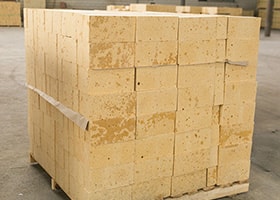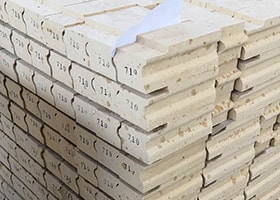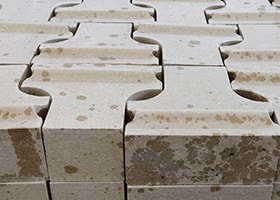- Mob/WhatsApp/Skype/Whchat: +86 18103817770
- E-mail: info@krefractorybrick.com
Product introduction of silica brick
The mineralogical phase of silica bricks consists mainly of quartz and quartz quartz, with small amounts of quartz and glass. With regard to decalaminated quartz, calcic quartz and residual quartz, at low temperature there are considerable variations in volume due to crystalline variations.
Features of silica brick
- The load softening temperature is high, almost close to its refractoriness, generally above 1620 ℃, which is the biggest advantage of silicon bricks.
- The thermal stability is poor, and the number of water cooling is only 1~2 times, which is mainly due to the high and low crystal transformation. Therefore, silicon bricks should not be used in places with rapid temperature changes.
- Due to poor volume stability and volume expansion during heating, proper expansion joints must be reserved during bricklaying. In addition, the volume of silicon brick changes more at low temperature, so the oven is baked. The temperature should rise slowly at low temperature (below 600 ℃).



Application of silica brick
Silicon bricks are the main material for the construction of acid melting plants and are also indispensable for the construction of coke furnaces, copper melting furnaces, etc. In view of the high rammosity temperatures of the silicone brick coating, such bricks can also be used in martin and alkaline electric kitchens, as well as in the upper grilled kitchens of the storage chamber.
| Silica Brick | GZ-95 | GZ-94 | GZ-93 |
| SiO2 | ≥95 | ≥94 | ≥93 |
| Refractoriness, ℃ | 1710 | 1710 | 1690 |
| Apparent Porosity, % | ≤22 | ≤23 | ≤25 |
| Bulk Density, g/cm3 | ≥1.8 | ≥1.8 | ≥1.8 |
| True Density, g/cm3 | ≤2.34 | ≤2.34 | ≤2.34 |
| Cold Crushing Strength, Mpa | ≥35 | ≥35 | ≥35 |
| 0.2Mpa Refractoriness Under Load T0.6, ℃ | ≥1650 | ≥1640 | ≥1620 |
| 20-1000 ℃ Thermal Expansion, % | 1.25 | 1.25 | 1.25 |
| Thermal Conductivity at 1000 ℃ , W/m.K | 1.44 | 1.44 | 1.44 |

